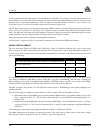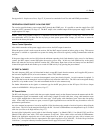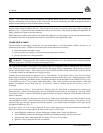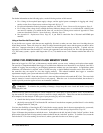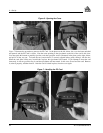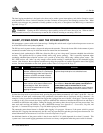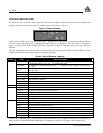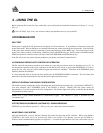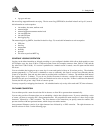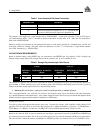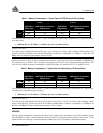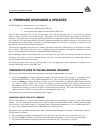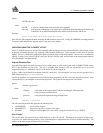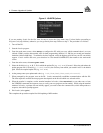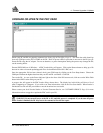
3 – Using the DL
28 DL™ User Manual Rev 3
Appendix F - DL Logs, Page 64 or refer to the MiLLennium Command Descriptions Manual for procedures and
explanations related to data logging and for further information on each of these logs.
• DOPA - reports the dilution of precision of the current satellite constellation
• ETSA - reports the GPS receiver’s channel tracking status
• LPSTATUS and MSGA – report DL status messages. For example, the DL monitors the internal temperature of the
receiver enclosure. A warning message is issued once per minute when the internal temperature is in excess of a
preset threshold. If the internal temperature exceeds the design limit, the DL shuts itself off and stays off until the
internal temperature drops 10 degrees below the design limit.
• POSA - reports the current computed position solutions
• RCCA - lists the default command settings. After the DL has been operational for a while, the RCCA log is useful
for indicating the status of all current command settings. Displaying the RCCA log after a reset displays the saved
configuration; refer to the description of SAVECONFIG in the MiLLennium Command Descriptions Manual.
• RVSA - reports the GPS receiver’s status
• SATA - reports satellite-specific data
COMMUNICATIONS WITH THE DL
Communication with the DL consists of issuing commands through the COM1 or COM2 serial port from an external
serial communications device. This could be either a terminal or an IBM-compatible PC that is directly connected to a
DL serial port using a null-modem cable.
For maximum ease, use a user-friendly graphical interface such as SoftSurv UTILITIES to configure and communicate
with your DL. However, you can also issue commands manually; the DL’s command prompt interface is described in
Appendix J, Page 90. For specific information about any of the DL’s commands and logs, please consult Appendix E -
DL Commands, Page 47, and Appendix F - DL Logs, Page 64 of this manual.
DATA LOGGING
The most basic activity is logging raw data. Each logging session (one uninterrupted period of time) is stored in a single,
unique file on a PC Card. This file can subsequently be transferred to a PC for post-processing using NovAtel’s SoftSurv
package.
DL records raw data in the form of logs, which are written to the data file on a periodic basis. NovAtel’s SoftSurv post-
processor automatically interprets these logs and the data that they contain. If you wanted to analyze the data in these
logs yourself, the details of the logs are documented in Appendix F - DL Logs, Page 64 of this manual.
The best way to configure the DL for data logging, or to manipulate log files (e.g. transfer or manage files), is using
NovAtel’s SoftSurv UTILITIES. This software, running on a PC, offers a user-friendly interface to your DL, and allows
you to carry out typical activities without having to learn to use the MiLLennium’s native-language commands and logs.
A file header is included with each logged data file. This header is designed to expedite post-processing when using
NovAtel’s SoftSurv post-processor package. The data file’s header consists of a GRPA log and a HDRA log (described
in detail on Pages 69 and 71 respectively) which includes the following:
• antenna height
• antenna serial number
• receiver serial numbers
• model numbers
• elevation cutoff
• minimum number of satellites
• start and end time



